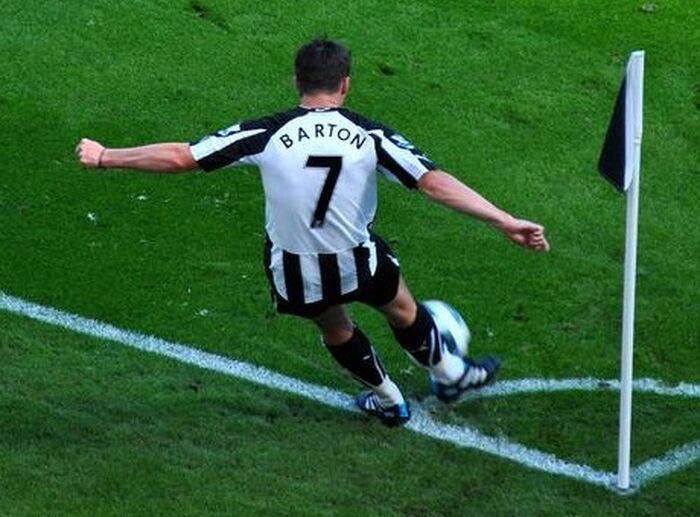Sports law in focus: the law of foul play
Following the criticism surrounding Sonny Bill William’s tackle on Anthony Watson, Keir Baker looks at whether dangerous play can ever be considered a criminal offence

Across a whole range of sports, the passion stemming from a competitive desire to win can lead to players causing harm to their opponents. Participating in contact sports such as rugby and football always carries the risk of being harmed by the actions of an opponent. A mistimed tackle, committed in the heat of the moment when the tackler’s focus is placed completely and solely on winning the ball back for their side, can end a player’s career.
Neil Taylor’s leg-breaking tackle on Seamus Coleman and Luke Byrne’s spine-fracturing tackle on Thom Evans were both damaging, accidental acts that shocked the sporting world. In this age of mass telecommunication, these players may never be able to escape from videos and photos of these incidents; they have the potentially to hang over the two Welshmen forever.
However, it could have so easily been much worse for both full-backs: the criminal law could have potentially intervened. Indeed, in both circumstances, the offence of Assault Occasioning Actual Bodily Harm (“The ABH Offence”) under Section 47 of the Offences Against the Person Act 1861 (“OAPA 1861”), had been committed. This is an offence that can lead to a prison sentence of up to five years if tried in a Crown Court. However, both Taylor and Byrne escaped criminal charges; the task of providing sufficient punishment was instead left to the governing bodies of the two sports.
This is often the case: in contact sports, it is common for a foul to cause an injury serious enough to meet the requirements of The ABH Offence.
English law needs to draw the line between criminal and non-criminal somewhere. Public policy concerns dictate that players must not fear criminal retribution when partaking in their chosen sport: this would deter activities that are ultimately socially valuable. Yet the law must also accept that it is not in the public interest for people to cause each other harm for no good reason.
Thus, the law operates a filter to separate out instances when a player has committed an act that requires the intervention of the criminal law, and an act that must be considered ‘part of the game’. This filter is the defence of consent. This defence holds that even where the requirements of The ABH Offence were present – that is, a sufficient degree of harm was caused and the intention to commit that harm existed – the implied consent given by all players to acts being committed against them that are within the proper and expected conduct of that sport will remove any threat of criminal prosecution.
Whether this defence will operate depends entirely on the individual circumstances of each case. This is well demonstrated by the facts of the case of R v Barnes [2004]: here, an amateur football player had severely broken the leg of his opponent through a bad tackle. The degree of harm caused here was potentially serious enough to trigger the offence of Inflicting Grievous Bodily Harm (“The GBH Offence”) under section 20 of OAPA 1861, which can also lead to a five-year prison sentence. But in his decision to overturn the player’s conviction for The GBH Offence, Lord Woolf CJ explained that, when partaking in a sport that is likely to lead to the causing of some harm, players implicitly provide their consent only to acts which do not go “beyond what a player can reasonably be regarded as having accepted by taking part in the sport.”
This is the demarcation of the limit of the defence of consent’s operation: where the act committed was not to be reasonably expected during the course of play, the criminal law may be able to intervene. And when making the decision as to what is reasonable, the jury will be asked to consider the type of sport, the level at which it is played, the nature of the act, whether the act occurred during actual play or ‘off the ball’, the degree of force used, the extent of the risk of the injury, and the state of mind of the defendant.
English criminal law therefore recognises that it should only intervene where a player’s conduct has been sufficiently grave to be properly categorised as criminal. A high bar has been set; it will take something serious, brutal and newsworthy before the law will even consider taking action. After all, sport is far too valuable to society, and the likelihood of sufficiently serious harm occurring is far too great, to introduce overly-stringent rules that could undermine people’s willingness get out onto the pitch and play
 Features / Should I stay or should I go? Cambridge students and alumni reflect on how their memories stay with them15 December 2025
Features / Should I stay or should I go? Cambridge students and alumni reflect on how their memories stay with them15 December 2025 News / SU reluctantly registers controversial women’s soc18 December 2025
News / SU reluctantly registers controversial women’s soc18 December 2025 News / Dons warn PM about Vet School closure16 December 2025
News / Dons warn PM about Vet School closure16 December 2025 News / Cambridge study finds students learn better with notes than AI13 December 2025
News / Cambridge study finds students learn better with notes than AI13 December 2025 Comment / The magic of an eight-week term15 December 2025
Comment / The magic of an eight-week term15 December 2025










